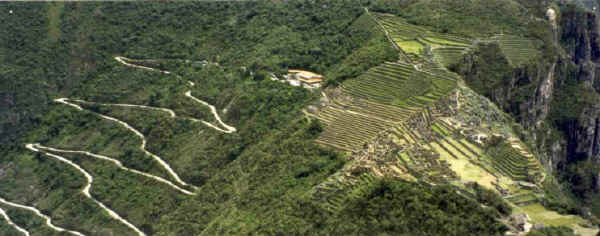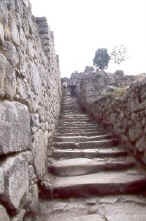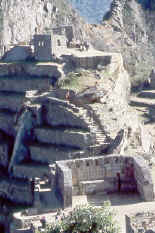

Destinations
Experiences
 |
L A
D A T C O T O U R
S |
 |
||||||||
| HOME | South America | Falkland Islands | Antarctica | Unique Destinations |
Unique Experiences |
Newsstand | ||||
 |
Machu
Picchu Site Map & Info |
"THE MYSTERY OF MACHU PICCHU" - from Peru Handbook/Footprint Handbooks
The mystery and intrigue that surrounds Machu Picchu is exceeded only by the hype. But in this case, it is entirely justified. There is a tremendous feeling of awe on first witnessing this incredible sight. The ancient citadel straddles the saddle of a high mountain with steep terraced slopes falling away to the fast-flowing Urubamba river snaking its hairpin course far below in the valley floor. Towering overhead is Huayna Picchu, and green jungle peaks provide the backdrop for the whole majestic scene.
 |
"Rediscovered" by
the American explorer Hiram Bingham in July, 1911, Machu Picchu was a stunning
archaeological find. The only major Inca site to escape 400 years of looting and
destruction, it was remarkably preserved, And it was no ordinary Inca settlement. It sat
in an inaccessible location above the Urubamba gorge and contained so many fine buildings
that people have puzzled over its meaning ever since. Bingham claimed he had discovered the lost city of Vilcabamba, and for 50 years everyone believed him. But he was proved wrong, and the mystery deepened. Later discoveries have revealed that Machu Picchu was the center of an extensive Inca province. Many finely preserved satellite sites and highways also survive. This is craggy terrain, and the value of a province with no mines and little agricultural lands - it was not eve self sufficient - is hard to determine. Bingham postulated it was a defensive citadel on the fringes of the Amazon. But the architecture fails to convince us, and in any case, defense against whom? |
| The Incas were the first to
build permanent structures in this region, which was unusual because they arrived at the
tail end of 4,000 years of Andean civilization. 16th-century land titles discovered in the
1980's revealed that Machu Picchu was built by the Inca Pachacuti, founding father of the
Inca Empire. But they do not tell us why he built it. One reasonable speculation is that
this area provided access to coca plantations in the lower Urubamba valley. However, the
fine architecture of Machu Picchu cannot be explained away simply as a coca collecting
station. Recent studies have shown that the "torreon" was an observatory for the solstice sunrise, and that the "Intihuatana: stela is the center-point between cardinal alignments of nearby sacred peaks. The Incas worshipped nature: the celestial bodies, mountains, lightning, rainbows, rocks - anything, in fact, that was imbued with "huaca", or spiritual power. And here Pachacuti found "huaca" in unusual abundance. The spiritual component is the key to understanding Machu Picchu. The Bingham expedition identified 75% of the human remains as female and a common belief is that Machu Picchu was a refuge of the Inca "Virgins of the Sun". However, the skeletons were re-examined in the 1980's using modern technology and the latest conclusion is that the gender split was roughly 50/50. |
 |
Machu Picchu was deliberately abandoned by its inhabitants - when, we do not know. This may have happened even before the Spanish invasion, perhaps as a result of the Inca civil wars, or the epidemics of European diseases which ran like brushfires ahead of the Spanish in the New World. One theory proposes that the city ran dry in a period of drought, another suggest a devastating fire. Or the city may have been evacuated during the period of Inca resistance to the Spanish, which lasted nearly 40 years and was concentrated not far west of Machu Picchu.
(Peter Frost, 1996)